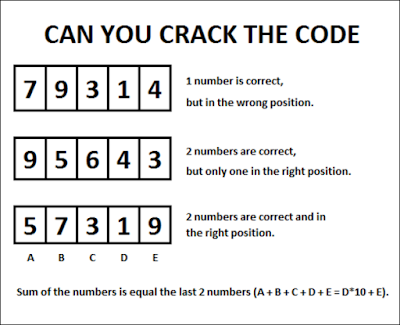The Mistimed Clock!
Andrea’s only timepiece is a clock that’s fixed to the wall. One day she forgets to wind it and it stops.
She travels across town to have dinner with a friend whose own clock is always correct. When she returns home, she makes a simple calculation and sets her own clock accurately.
How does she manage this without knowing the travel time between her house and her friend’s?
That's how she manages to set it accurately!
She travels across town to have dinner with a friend whose own clock is always correct. When she returns home, she makes a simple calculation and sets her own clock accurately.
How does she manage this without knowing the travel time between her house and her friend’s?
That's how she manages to set it accurately!






